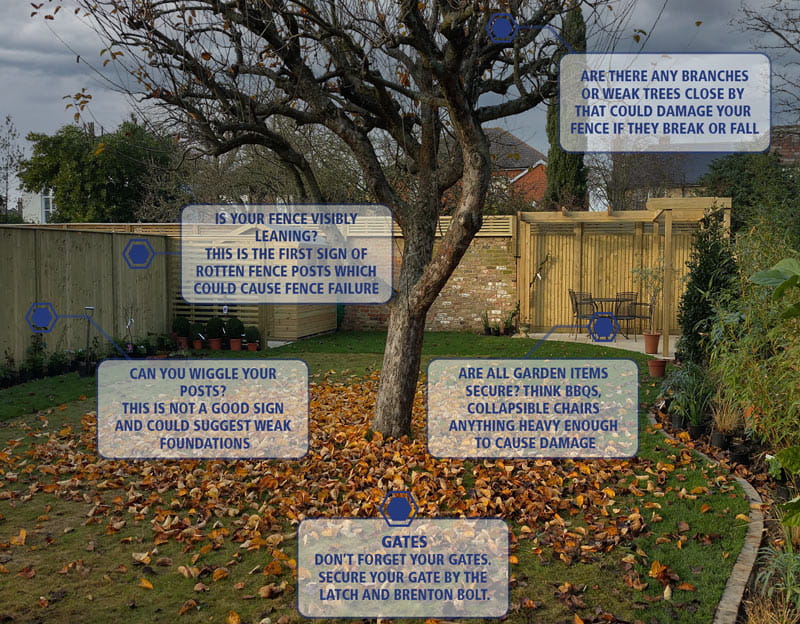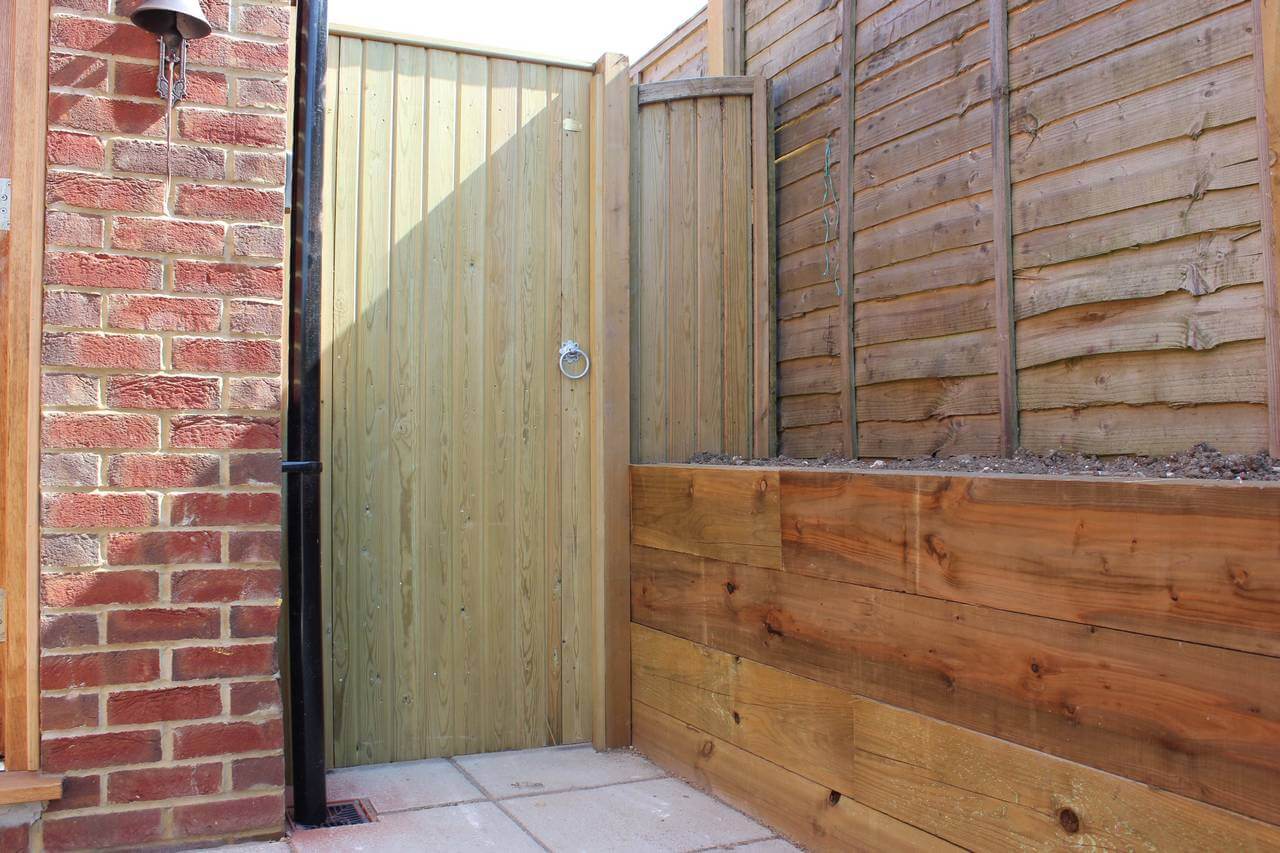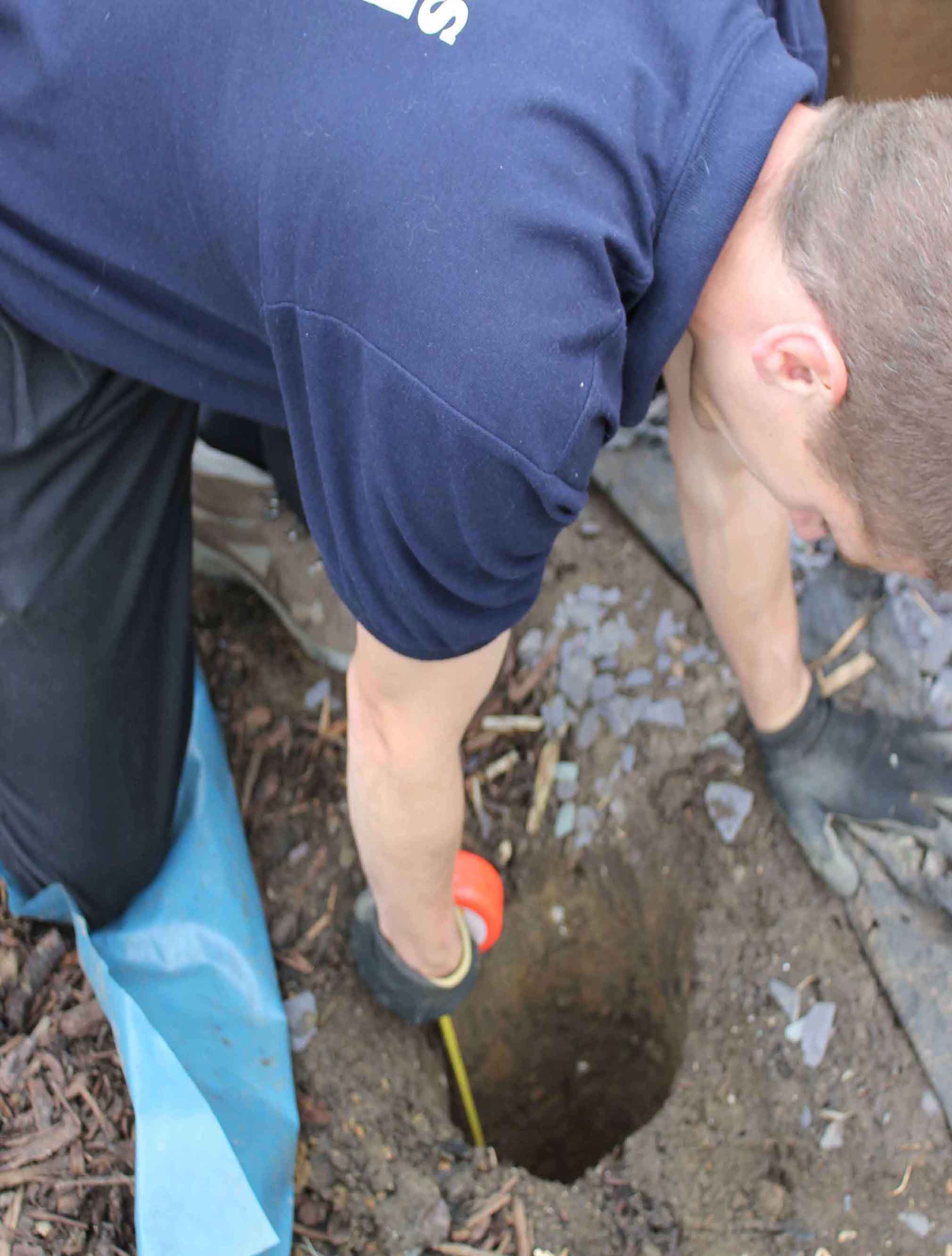02/01/2024 03:19 PM
Storm damage is increasing in frequency as storms hit harder because of climate change.
There are many reasons fences can succumb to storm damage. We offer our best advice to reduce the risk and help prevent damage.
Low quality, poorly installed fencing is usually a key culprit in contributing to fence failure and repair costs. We have developed a useful guide to advise how you help prevent storm damage to your fencing as regular checks can help your home, garden and fencing stand up to bad weather when it arrives.

Remove hazardous or weak branches
We would recommend the cutting down or removal of loose or overhanging branches in your garden, particularly those close to fencing, windows, drainage or even power lines that are unsafe.
If your garden collects large quantities of debris in and around the fencing this can prove detrimental as the fencing will often become rotten especially if the timber is untreated. Wood has always been susceptible to rot and insect attack so we recommend regularly cleaning nearby your fencing. It is worth noting the traditional process of brushing or dipping in creosote or other preservative only treats the outer surface; this needs to be repeated frequently and cannot reach awkward parts of the product and also the timber that is underground.

Remove large, loose or heavy objects from the garden
Strong winds can force even large heavy objects fly into your fence potentially causing irreparable damage. Therefore move objects which can easily get picked up by strong winds such as rattan patio furniture, flowerpots etc in an enclosed area like a garage or shed.
Think about garden gates
Gate security is important while wind and storms are ongoing. Before buying a garden gate think about the role the gate will play in your life and what it's day-to-day purpose will be. We recommend considering gates with diagonal and horizontal braces for support on the rear of the gate. Premium pales which are thicker and heavier will increase the strength of the gate which may prove helpful during a storm. Gates which are framed for extra strength allowing it to endure heavy wear.

How to avoid costly damage to your fencing
Install fence posts at least 600mm deep
We recommend posts should be set in the ground at a minimum of 600mm (2ft) - and deeper for taller fences. For example we recommend for mountainous regions using a 2.70m post dug 900mm into the ground.

For impartial advice about how deep to dig fence posts and why this is important see our blog on topic alternatively, research the differences between concrete or wooden fence posts via our blog to help you decide which is best for you.
How deep to dig your fence posts